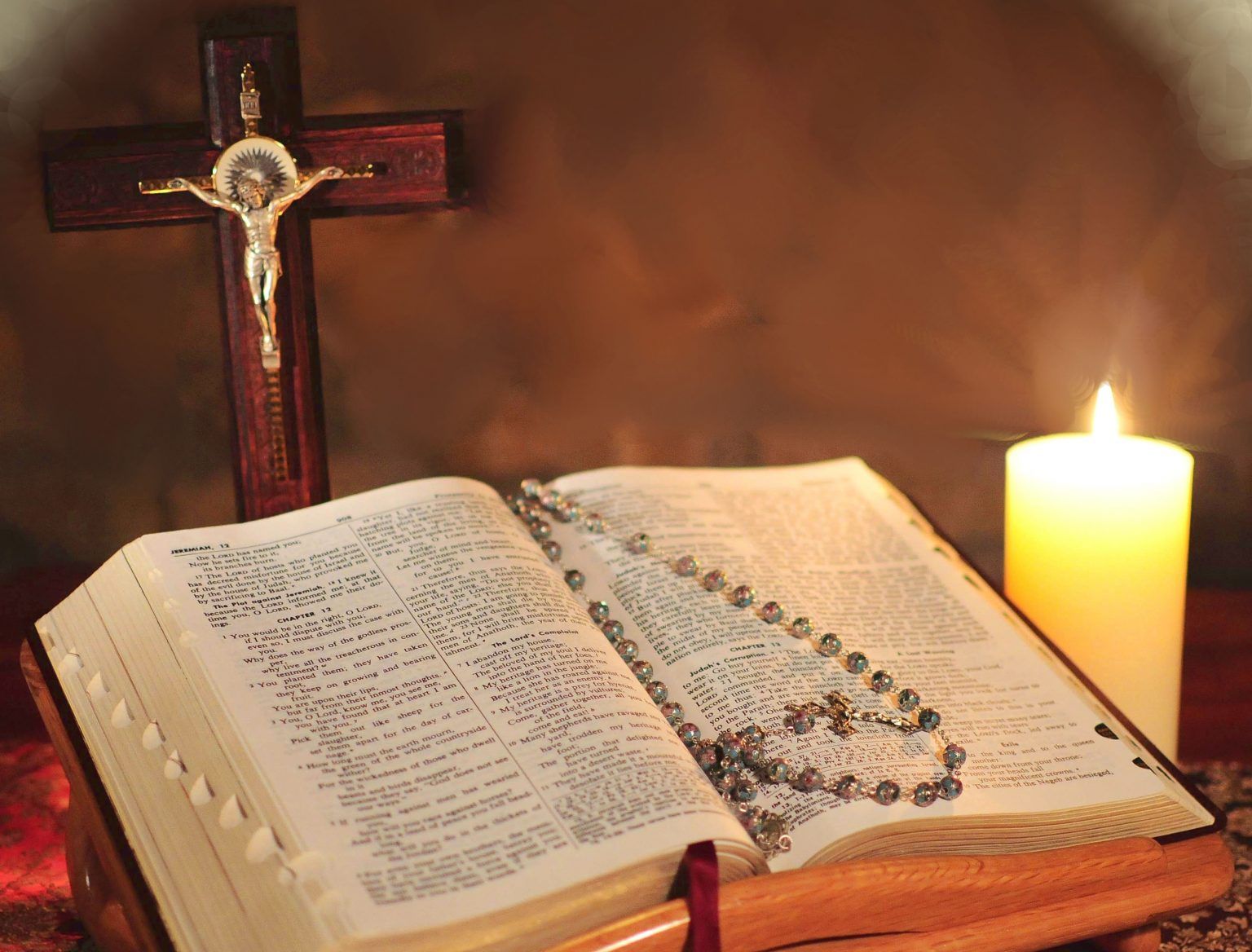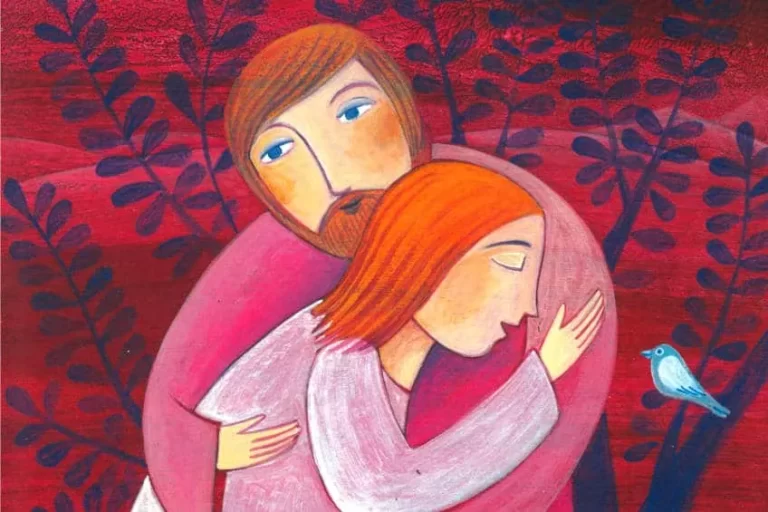How to read and study the Catholic Bible?: Complete guide
The Bible as the compendium of books that transmit the word of God must be understood in order to be able to interpret in each one of them, the message that God wants his Catholic people to receive, therefore, the real disposition, discipline and faith to know it is relevant. . In this article, some ideas of how to read the Catholic Bible will be outlined.
What is the Bible?
First of all, it is prudent to know the meaning of that beautiful book that some families have at home, but because they consider it difficult to read, they keep it in the library. The Catholic Bible is considered the most influential book of all time, in which the Catholic family wants to have a foundation to guide its steps, serve as an orientation and guide in family life.
The Catholic Bible is made up of a series of religious texts written in Hebrew, Aramaic and Greek that were grouped to form the Old Testament and later the New Testament, in it, the word of God is evoked towards humanity. Written by men to spread a spiritual message and teaching.
The Bible contains seventy-three sacred books full of messages of spirituality, of the word of God directed towards the salvation of humanity. Therefore, when attempting to understand it, one must have a patient, humble and persistent attitude.
Why should I read the Bible?
Every Christian will always have a moment when they need to feel close to God, where in addition to appealing for prayer, they may feel that they should also know more about his teachings and one way to do it is by learning to read the Catholic Bible . Nurturing yourself with the word of God is filling yourself with strength and awareness of how to channel the paths that he has in his present and those to come, both personally and in the family and the environment that surrounds them.
How to read the Catholic Bible ?
At all times it has been complex and difficult to start reading the Bible, apart from its content. So, how to start reading the Catholic Bible , well, for this, and since it is the first time, it is suggested to follow the steps indicated below:
Begin with the reading of the First Letter of John
It describes that God is Love. God is light, is justice, love and truth. That he has chosen you to follow his path. You will notice when reading the letters, how great God is and the immense love towards humanity. It teaches the relationship between the children of God, the fidelity to Jesus Christ demonstrated by the behavior and the love towards others.
Through this reading, the reader will get to know the love of God towards the humble, which will lead to sustain and root the belief in him and feel it more spiritually. In his letter, John tells a simple and divine truth, as it is: God, eternal life, has come to live with men. “For God loved the world so much that he gave his only begotten Son, so that everyone who believes in him may not perish but may have eternal life.”
Continue with the Gospel of Luke
This talks about the life of Jesus of Nazareth, born of Mary, the miraculous conception performed by God. Everything that happened since his birth, what he experienced in his first years of life, his ministry until his crucifixion and resurrection. The Gospel of Luke is the third book of the New Testament and one of the four Gospels of the Holy Bible. In this, it is about the doctrine of Christ on the subject of salvation.
As has been pointed out in this Gospel of Luke, the life, ministry and miracles of Jesus Christ are outlined, as well as focusing on aspects of the culture and families that were with Jesus during his stay on earth. Then, its content on all this, is observed in a distribution of eight sections, namely:
- In the first; it is the introductory part and object of the Gospel. The second section; tells us about the events related to the coming of Jesus Christ and John the Baptist. The aspects of his birth and childhood. Record the first quote of Jesus in this Gospel of Luke, in its second chapter, verse 49. The third section; deals with the path and event of the public ministry of Jesus, describing his baptism and his temptation.
- In its fourth section; it describes the continuation of the mission of Christ, the election of his twelve apostles and his miracles. It is seen in Jesus, the authority conferred on him by God, with respect to the power to forgive sins, to heal people, to know thoughts, give people peace and his dominion over nature by protecting from storms. There are teachings of Jesus that will serve as guidelines or models to live as God wishes.
- In the fifth section of this Gospel; the moment is described where Jesus performs the miracle of converting five loaves and two fish to provide food for five thousand people. Also, in this reference is made when the apostle Peter confesses that Jesus is the Christ, the Messiah.
- In the sixth section; beginning in chapter 9, verse 51, it evokes the spread of the ministry of Jesus in Judea, teaching how to pray to God, teaching what should not be done, not judging others, repentance and not giving importance to material things but having always present and trust in God.
- The seventh section of the Gospel of Luke deals with the life teachings and miracles of Jesus. This section comprises from chapter 13:22 to 19:22. The last section reviews the last moments of Jesus (trial and crucifixion) until his resurrection and ascension to heaven. Jesus’ authority on earth as the Son of God is confirmed, remember his teachings on how to live and how to trust God.
The book of the Acts of the Apostles
This book tells the story of how the first church arose, its birth and development. The path traveled by the first Christians to expand the teachings of Jesus, the experiences and difficulties lived. After writing the gospel, Saint Luke writes this book to make known what they had seen and heard from Jesus, to continue giving continuity to Christianity.
This book narrates Peter’s recognition that the teachings of the Gospel must be imparted beyond Judea, that is, it must cover the whole world. Hence, the rise of the first church. In this, what is related to the resurrection and ascension of Jesus and its repercussion is taken up to start the development of the object of the church.
There are three important themes in the book of Acts such as:
- First, the Holy Spirit that will mean the power and strength of the church to spread the kingdom of Christ. The testimonies that speak about his influence on the spirit of Christians who suffered from persecution. In the book of acts, he relates that the power of the Holy Spirit makes possible the spread of the gospel and the kingdom, in his religious people, which will give them power to live.
- Second, the role of the apostles instructed and formed by Jesus, who by their privilege of having seen Jesus after his resurrection are the ones appointed to narrate the life of Christ and his authority to lead and serve the church of Christ. Office that Jesus left them;
- As a third theme, the great role of the apostles is reiterated insofar as the gospel and the kingdom of Christ continue to be known throughout history. At this point, in relation to the subject of the Holy Spirit and the apostles, Jesus’ words to his apostles are cited: “You will receive power when the Holy Spirit has come upon you, and you will be my witnesses in Jerusalem, in all Judea, in Samaria and to the ends of the earth. (Acts 1:8).
After obtaining the information from the books of the Acts of the Apostles, it is recommended to read the Gospels of Mark and Matthew, through them, the love of God for man is glimpsed, given by sending Jesus to earth to to die on the cross in order to give eternal life.
The Gospel of Mark
His gospel is simple. He appears in several New Testament writings. His writings are notable for being oriented to Roman believers, especially Gentiles, that is, non-Jews. His writing is addressed to Christians as a story of Jesus Christ as the Servant of God and Savior of the world, with the purpose of rooting and consolidating their faith, especially when they find themselves persecuted.
Its intention is to teach what it means to be a disciple of Jesus Christ. In his account, Mark presents Jesus as the Messiah, for all mankind, not just for the Jews. It also highlights that even when they recognized his faith in him, it is only strengthened with the moment of Jesus’ resurrection. “Don’t be scared; you are looking for Jesus the Nazarene, the one who was crucified; he has risen, he is not here; see the place where they put him.” (Mark 16:6). “And he said to them: Go into all the world and preach the gospel to every creature.” (Mark 16:15).
The Gospel of Matthew
Matthew’s writings are oriented mainly to his Jewish compatriots, he writes in order to recount as a witness the life of Jesus, asserting that Jesus Christ is the Son of God and the long-awaited Messiah announced by the prophets in the Old Testament. He highlights the humility and merits of Jesus that are the basis for why he is considered the Messiah. He points out that when Jesus came to earth, he announced that the essential thing was to love your neighbor as yourself.
Continue with The New Testament
Another step in how to read the Catholic Bible and understand it is also to broaden the reading of the New Testament, which comprises a total of twenty-seven books that recount what happened after the arrival of Jesus Christ. In this, the four Gospels, the Acts of the Apostles and the last book of the Bible called the Apocalypse of Saint John are displayed, as well as numerous letters.
This last book, the Apocalypse, also called the book of revelations, shows what God on his throne desires and promised to men as part of their future, likewise, it speaks of life after death. For the Christian, when deciding how to read the Catholic Bible, it is essential to keep in mind the four Gospels of the Catholic Bible, as well as the other books of the New Testament.
Connoisseurs of this subject mention that apart from the interest and desire of the people, they are also entrusting themselves to God so that He provides the necessary wisdom to understand them. It is also recommended to have a basic knowledge of the Old Testament: Genesis, Exodus, Deuteronomy, Joshua, Psalms, Proverbs, among other aspects that it presents to us.
the old testament
Following the order of ideas, knowing the Old Testament is part of that process of how to read the Catholic Bible and understand it, where the New Testament is first worked on and then the Old Testament is continued and its content can be elucidated. The Old Testament is made up of forty-six books on the history of the creation of the world, divided in turn into four categories, namely:
- The Pentateuch, the Historical books, the Poetic or Wisdom and the Prophetic. Of these books, the Psalms are the most widely read, as they are prayers of exaltation to the Father. It is cited, as an example: ““I will exalt you my God, O King, and I will bless your name forever and ever. Every day I will bless You, And I will praise Your name forever and ever…..” (Psalms 145:1-3)
Choosing a good Bible translation
It is suggested for reading to have a Bible that has been translated from the original texts, that is, from the Hebrew and the Greek, in order to avoid confusion. Theologians and seminarians most often use the Jerusalem Bible, because it is descriptive and explanatory. This bible shows at the end a chronological review of biblical events within the geography, history and culture related to the Bible.
Another suggestion is to use a traditional bible to the catholic church. Likewise, it is good for each person to have their own Bible so that the most important and significant texts in relation to the life of Christ, the life of prayer and evangelization stand out in it.
In this selection of the best bible it is prudent that you pay attention to the edition, the introduction that is made of it, the illustrations, how the books are cited and the content of the annexes. An example of this is the Latin American Bible, which in its introduction gives an outline of the events that occurred in the world before the Bible, the design of its Gospel index is versatile and presents a series of short topics that can help a lot, entitled The biblical teaching. Another way, but not as usual, of how to read the Catholic Bible is through the online Bible.
Study the Bible with humility
When beginning the study of the Bible, one must have an attitude willing to know the word of God, free from prejudice and willing to understand what is expressed in it. Have a patient attitude, do not be discouraged because understanding the scriptures of the Bible takes time. It is good to be aware of the explanatory notes and their reading, since they allow a better understanding of the biblical text and to be consistent in order not to stop reading, either because of boredom or because they do not understand clearly.
To read the Bible, an attitude of order must be kept in mind and why not, of respect towards the word of God and the message that he wants to give us, through it. When making the decision to read the bible there must be security, interest and determination to continue the knowledge of God’s message to humanity.
Ask the Holy Spirit to interpret the Bible correctly
At this point the spiritual comes to play an important role and how convinced people are, to understand how to read the Catholic Bible . It is opportune to entrust ourselves to God so that he provides the lucidity to understand it every day. Also in this process, it is suggested to share with other people the interest in the study of the Bible, by virtue of the fact that in this way there is the possibility of talking and obtaining a second opinion, regarding the interpretation of the books.
“But the natural man does not perceive the things that are of the Spirit of God, because to him they are foolishness; and he neither can he understand them, because they have to be spiritually discerned” (1 Corinthians 2:14).
Read the introduction of the books before their content
Considering that most Catholic Bibles have a complete introduction in each book, the reader is suggested to read them before starting to read the content, this will allow him to have better information about who wrote the book and in what time they originate. events. The Jerusalem Bible is recognized for being complete in its introduction, making them first focus on it and then begin reading the texts of the Bible.
Why is it important to study the Catholic Bible?
For everyone who is focused on knowing the Bible, he recognizes that his reading will allow the word of God to be expanded, just as he wanted it in ancient times. It will also fill and allow you to grow spiritually.
In the readings, the opinion is collected about the importance for everyone and especially for families to take an interest in reading the Bible and strengthen their faith, which transforms their lives by knowing, interpreting and feeling the word of God.
“Man shall not live by bread alone, but also by every word that proceeds from the lips of God” (Matthew 4:4).
Major Catholic Bibles
Unquestionably, because the issue of wanting to know how to read the Catholic Bible has to be well channeled, the best known and most used Bibles are also indicated, these are:
The Jerusalem Bible
Its name derives from the intervention in its preparation of a team of Bible scholars led by the Biblical School of Jerusalem. Its first edition happens in 1956 in French and then for the years 1967 and 1975 the first and second editions are published in Spanish, respectively. It is known for being a bible of explanatory, critical, academic and theological content. It is considered fundamental in the critical study of the Bible and has been a contribution in the formation of other biblical editions. Its acquisition cost is high.
It is considered one of the most qualified versions in Spanish. Its preparation has been going on for twenty-five years, therefore, it is seen as an optimal translation of content and explanatory notes. It is a version that leads to an explicit understanding of the content of the word of God and its vision in Christian life today.
This Bible is focused on the existence of a combination between the traditional text of the Bible and the daily life of the people, that is, relating the content of the first with the experiences of everyday life. Exposing answers: who is God? What is the human being, his origin, his destiny, the meaning of his life? What is family, friendship?
The Latin American Bible
This Bible is presented to be handled by all people, considering its colloquial language, to the understanding of all. It is of significant use in Catholic school institutions to impart the education of the faith. By virtue of the fact that its authors have focused on relating the word of God with the Latin American social reality. It has been widely spread.

Hello! Let me enthusiastically introduce myself as a dedicated blogger fueled by an intense passion for meticulously crafting insightful and well-researched blogs. My mission revolves around providing you, dear readers, with a veritable treasure trove of invaluable information.







